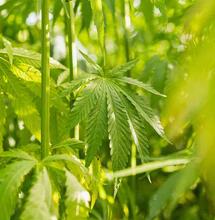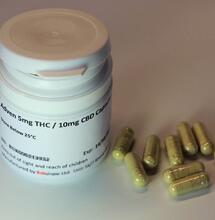The Medicinal History of Cannabis

The first likely recorded use of cannabis as a medication was by legendary Emperor Shen Nung between 2696 – 2737 BC in China
Nung was fabled as a scholar, farmer and Hemp fanatic whose documentation of the plant's 'yin energy' for malaria, dysentery, constipation and rheumatic discomforts is believed to be the first medicinal encyclopaedic entry.
There are also records of the medicinal use of cannabis listed in The Egyptian Ebers Papyrus – a medical manuscript dating back to approximately 1550 BC – for treating pain, fever and uterine contraction.
Over in the Mediterranean, Dioscorides – physician to the Roman Emperor Nero – recorded it as a remedy "for pains in the ears". Meanwhile, between the 8th to the 18th century, proof shows that the Arab world used cannabis as a painkiller, anti-inflammatory and anti-epileptic.
There was extremely little documented use in the West until the 17th century when global trade increased. Then, in 1621, English Clergyman Robert Burton presented cannabis as a remedy for depression in his publication The Anatomy of Melancholy. After that, however, Irish medic William Brooke O'Shaughnessy made the first jump into medical experimentation in Western medicine.
Working in India from 1833, O'Shaughnessy investigated and tested the indigenous Cannabis Indica (Hindu Kush). This strain had a historical use in India that dates back thousands of years. After some extremely unethical testing, he concluded cannabis is a wonder drug helpful in treating rheumatism, rabies, infantile convulsions, cholera, tetanus and delirium in alcohol withdrawal.
The Provincial Medical and Surgical Journal, which later became the British Medical Journal, proudly granted medicinal Cannabis its front page. It wasn't long before its use became popular in the UK, regularly used as a painkiller. Queen Victoria was even prescribed it by her private physician to assist with menstrual pain and pain after childbirth.
Anxiety towards the drug grew throughout the 19th century. Critics began connecting its use with madness. Something This led to the Indian Hemp Drugs Commission report in 1894. This statement contemplated the social and medicinal use of cannabis in the region. The paper concluded that cannabis might be detrimental in extreme amounts but wasn't damaging in moderation and could benefit those in malaria-ravaged areas.
Nevertheless, its association with mental illness was not forgotten. Pharmaceutical companies soon lost interest once the syringe became a standard. Drugs such as morphine were far easier to formulate into effortlessly injectable fluids. Cannabis, in contrast, is insoluble and does not readily dissolve in water.
The most enduring and adverse effects on the reputation of cannabis came in the 1900s, courtesy of Henry Anslinger, an American prohibition officer. Anslinger encouraged racist propaganda and Cannabis paranoia to sway public opinion in the direction of prohibition. Nevertheless, until 1928, cannabis was legal worldwide.
Racist propaganda was already sweeping across the USA at this time. Cannabis was linked to Mexican immigrants, leading to the emergence of the word Marijuana. The spelling was modified from Marihuana to Marijuana to make it rhyme with the city "Tijuana" and appear more Mexican.
Not long before, media outlets began spinning stories about ethnic minorities using Marijuana and attacking and frolicking with white women. Interestingly, many of the wealthy media moguls of the time were big investors in the lucrative cotton industry to which Hemp was beginning to emerge as a direct rival.
This gave them plenty of motive to tarnish the reputation of anything to do with Cannabis or Hemp. Since then, cannabis's reputation has predominantly been associated with recreational use and exaggerated links with mental health issues.
Until 1973 in Britain, cannabis-based products were still prescribable on the NHS. Only following the Misuse of Drugs Act that was cannabis deemed as being of "no known medical use."
However, the medical benefits of cannabis remained a dialogue in one way or another, and pharmaceutical manufacturers had some proof of a possible cannabis market. From that point onward, therapeutic forms began to emerge accordingly. Cannabis began to be used as an appetite suppressant, an anti-sickness remedy, pain management, and an antiglaucoma for treating asthma and Multiple Sclerosis (MS).
Additional motivation came during the 1990s following the discovery of the endocannabinoid system– a self-regulated track controlled by our body's self-produced cannabinoids called endocannabinoids. The endocannabinoid system is believed to have many functions, such as pain and movement management, nerve protection and other potential uses.
The government refused to recognise cannabis-based medicines for a few decades until it had solid proof of clinical use. However, the significant constraint on the plant made it inconceivable for companies to conduct vigorous clinical trials.
Eventually, though, big pharma company GW pharmaceuticals haggled with the Home Office and managed to licence access to the plant to execute research for their new product Sativex. In 2010, Sativex became the first licensed cannabis derivative product in the UK. It is used to help with symptoms of MS-associated spasticity.
Thanks to public pressure and the rise of the legal cannabis industry, the full potential of this drug is slowly being realised. That said, while there are many exciting discoveries to be made, there's still so much we don't know about it.








